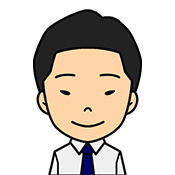
Let’s try to express the present progressive sentence in Korean.
If there is something you have been doing recently, it helps to describe it.
Expressing “ongoing” and “continuing.
Use it to be specific about the situation.
If you want to express the situation at that time in detail, use -고 있다.
Describe in detail.
학교에 가요.
I go to school.
↓↓↓
학교에 가고 있어요.
I’m going to school.
In other words, they are currently moving toward the school.
It means that the action or condition is ongoing or continuing at that time.
How to use “-고 있다”.
-고 있다 should be combined with the verb stem.
Av + -고 있다/계시다
보다 + -고 있다 = 보고 있다
배우다 + -고 있다 = 배우고 있다
공부하다 + -고 있다 = 공부하고 있다
오다 + -고 있다 = 오고 계시다
기다리다 + -고 있다 = 기다리고 계시다
먹다 + -고 있다 = 드시고 계시다

I write three lines a day in my journal.
(쓰다)

This is simmering potatoes and chicken.
(끓이다)

I’m taking private Chinese lessons twice a week.
(배우다)

It’s been a long time, I’m cleaning the kitchen.
(대청소하다)
In Korean, to keep repeating something regularly is also -고 있다.
Cases where -고 있다 feels difficult.
Use “계시다” for honorific expressions.
When expressed in honorific language, 계시다 is used instead of 있다.

Grandpa is watching TV.

The President is waiting for you.

You can have it first.
However, if there is a respectful vocabulary such as 드시다, use that.
The state of wearing something or being equipped with something.
-고 있다 means that the situation is ongoing or continuing, see the next sentence.

It’s incredibly cold, so I’m wearing gloves.

Who is the person wearing that hat?

The company president always wears an expensive watch.

I know that too.
It can also mean “wearing” in this way.
The state of being equipped with clothing, accessories, or knowledge, etc. is a slightly different example.
Practice while imagining the situation.